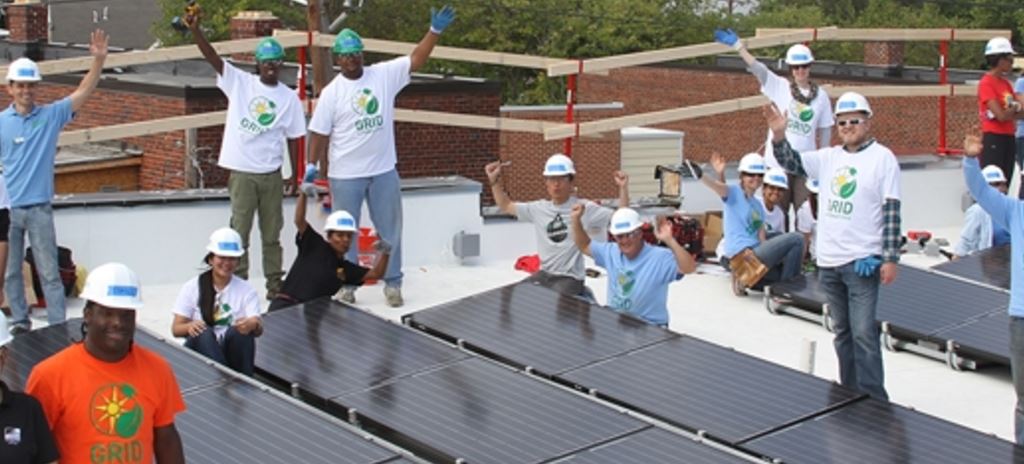Over the past 20 years, numerous industries have launched “diversity initiatives” with the purported intent of making those industries more accepting of women, people of color and other minorities into those industries and making their paths as easy as to enter and progress as it is if you’re a white male.
And while other industries’ campaigns have launched those initiatives with much fanfare, they frequently fizzle. Instead of bringing about actual change, they often devolve into whatever the diversity version of “greenwashing” is.
I should know – I’ve been part of three such initiatives (hotels, 1996; golf course maintenance, 2000; and pest management, 2006). And each time I came away discouraged when the pretty talk that adorned conferences and conference calls netted little if any progress.
Which is why the fact that The Solar Foundation (TSF) has done a study of the solar industry’s current levels of diversity – and done it with such bracing honesty – is a testimony to how much some in the solar industry want to ensure it learns from the traps that have befallen previous efforts in other economic segments. There is no sugar-coating here – which gives me hope that maybe this time will be different.
And when you’re a segment of the economy that created one out of every 50 jobs last year, you simply don’t have the luxury of getting it wrong.
The good news? Well, to paraphrase Winston Churchill’s famous 1947 commentary on democracy, solar is the worst U.S. energy source in terms of the diversity of its workforce and executives – except for every other energy industry in the United States.
The bad news? At least for now, the lack of diversity in the solar industry is a pretty big problem. Thankfully, as American author, salesman and inspirational speaker Zig Ziglar is credited with saying, the first step in solving a problem is to recognize that it does exist.
“What surprised me most when we got the results is that none of what we found surprised me,” said Andrea Luecke, president and executive director of TSF told me sitting in the lobby of The Westin Las Vegas hours before the opening ceremony to kick off Solar Power International 2017. “All of the numbers we now have comport with what we’ve always known. And it is true – some of the numbers are disheartening. Some are ugly.”
“But if you want to change anything, you have to start with what is real – and that’s what we hope we are doing with this report,” Luecke said.
Here are the baseline numbers that inform the rest of the study’s findings:
Presently, Hispanic or Latinos make up 17% of U.S. solar workers, 7% are black/African-American, 9% are Asian, and American Indian or Alaskan Native and Native Hawaiian each account for less than 1%.
And while women made up 50.8% of the U.S. population after the 2010 census, they only make up 28% of the solar industry (although they do lead five of the industry’s largest associations, so there’s that). Veterans of the U.S. Armed Forces still only comprise 9% of the workforce despite the industry’s decision to make a big show of pledging to hire more veterans several years ago.
In Part II of this series, we’ll take that deeper dive into the numbers and reveal some of the stark realities solar-industry employees face as they try to make a living as a part of the most dynamic industry in the United States today – and why it’s not just a matter of doing the right thing. It’s about doing the right thing for your business’ bottom line. Plus, we’ll also reveal which group leads all others in getting the worst of it by almost any metric measured.
Interested in more news in solar diversity? Here’s another must-read story:
Solar jobs: Progress and challenges in diversity
The views and opinions expressed in this article are the author’s own, and do not necessarily reflect those held by pv magazine.
This content is protected by copyright and may not be reused. If you want to cooperate with us and would like to reuse some of our content, please contact: editors@pv-magazine.com.








By submitting this form you agree to pv magazine using your data for the purposes of publishing your comment.
Your personal data will only be disclosed or otherwise transmitted to third parties for the purposes of spam filtering or if this is necessary for technical maintenance of the website. Any other transfer to third parties will not take place unless this is justified on the basis of applicable data protection regulations or if pv magazine is legally obliged to do so.
You may revoke this consent at any time with effect for the future, in which case your personal data will be deleted immediately. Otherwise, your data will be deleted if pv magazine has processed your request or the purpose of data storage is fulfilled.
Further information on data privacy can be found in our Data Protection Policy.